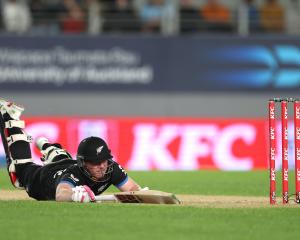New Zealand researchers have dispelled the popular cricket cliche that catches win matches - at least in one day international matches.
The most striking case study is the Black Caps national team, a new University of Canterbury (UC) study concludes.
The research looked at 122 one day internationals (ODIs) played between the top eight cricketing nations between February 2011 and July 2012, including the 2011 Cricket World Cup.
The research involved classifying all the opportunities for a fielding dismissal - catch, run out or stumping - with a degree of difficulty based on the ball-by-ball commentary on the ESPN Cricinfo website.
The researchers then analysed the contribution those opportunities could have made to the overall performance of the team.
"Over the period of our database, New Zealand ranked first out of all the major cricketing nations in taking catches and effecting run outs, once the degree of difficulty of the catch or run out was taken into account," said economics and finance lecturer Dr Seamus Hogan.
"Despite this, however, over the same period, the Black Caps had the worst record in ODI cricket of all the major cricketing nations."
Traditional cricket scoring has a large number of statistical indices for batters and bowlers but very few for fielding.
The UC research project, undertaken by incoming honours student Marcus Downs and supervised by Dr Hogan, sought to address the imbalance for the case of ODIs.
"While obviously a brilliant catch or run-out can sometimes turn a match, we found that, in ODI cricket at least, fielding was not as vital as batting or bowling," Dr Hogan.
"Specifically, according to our data, good bowling can contribute about three times as much as good fielding to the performance of the team, and good batting even more."
The researchers measured the contribution of batsmen by the number of runs they would add to the first innings total of their team, on average, and the contribution of bowlers and fielders by the number of runs they would reduce the opposition's first innings score on average.
They took into account the game situation in which the runs were scored or the wickets taken.
"The standard deviation of the distribution across bowlers is more than three times the standard deviation of the distribution across fielders, with an even higher standard deviation for batsmen," Dr Hogan said.
The results of the cricketing summer scholarship will be presented at a public event on campus on February 8.











